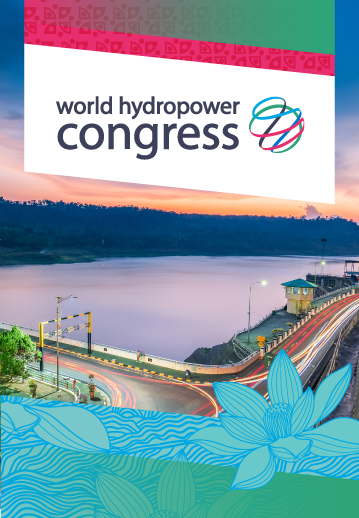#IHA30 - 30 countries where hydropower is the backbone of the energy mix
Hydropower isn’t just a solution for tomorrow’s energy challenges; it has been powering progress for over a century. From fuelling industries to lighting up homes, it has shaped economies and transformed communities worldwide. As the International Hydropower Association celebrates 30 years, we explore 30 countries where hydropower has been a cornerstone of the national development story.
1. Australia
While hydropower makes up a smaller slice of Australia’s energy mix compared to other countries on this list, the nation’s story with hydropower is one of pioneering innovation and global influence.
The first publicly owned hydropower plant in the Southern Hemisphere – the Duck Reach Power Station – was built in Australia in 1895, as highlighted in our brief history of hydropower.
In the modern era, Hydro Tasmania – an Australian company – was instrumental in developing the first IHA Sustainability Guidelines in 2004. And today, Australia continues to play a leading role in the global advancement of hydropower, with the country’s former Prime Minister Malcolm Turnbull serving as President of IHA.
While hydropower represents less than 10% of the energy mix in Australia, the development of pumped storage hydropower (PSH) has become the backbone of the country’s strategy for achieving net-zero emissions. With a rapidly growing share of wind and solar, PSH is playing a crucial role in ensuring grid stability and providing flexible energy storage. Projects like the Snowy 2.0 and the Kidston Pumped Storage Hydro Project are setting the standard for integrating large-scale energy storage into national power systems.
2. Austria
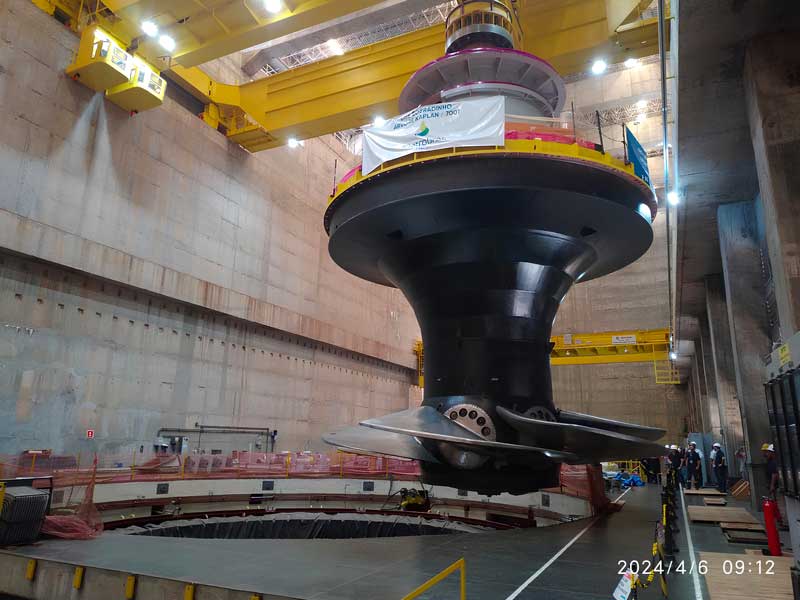
Austria’s hydropower story began in the late 1880s, when the country’s first commercial hydroelectric generators were connected to the grid. But it was an Austrian innovator, Professor Viktor Kaplan, who left a lasting mark on the world’s energy landscape. In 1913, he developed the Kaplan turbine – a propeller-type turbine with adjustable blades – revolutionising hydropower technology. Today, his invention powers more than 200GW of installed capacity globally, underscoring Austria’s legacy of innovation.
This spirit of ingenuity, combined with Austria’s mountainous terrain and abundant rivers, set the stage for a rapid expansion of hydropower in response to coal shortages after World War I. Hydropower soon became the backbone of Austria’s energy system, fuelling its transformation into one of the world’s most advanced economies. The capital, Vienna, regularly ranks among the world’s most liveable cities, supported by a stable and sustainable energy supply.
Today, more than half of Austria’s electricity comes from hydropower, which also plays a key role in managing floods in the alpine regions. Recent efforts focus on growing pumped storage hydropower capacity – a critical move to balance the grid as wind and solar energy become increasingly prominent.
3. Brazil
Brazil is a global hydropower giant, with over 70% of its electricity generated from hydropower – the highest share of any major economy. Its vast rivers, like the Amazon and Paraná, have enabled the development of large-scale hydropower projects.
Most famous is the binational Itaipu project, developed jointly with Paraguay, which was the world’s largest power station when completed in 1984. A decade later it was named as one of Seven Wonders of the Modern World by the American Society of Civil Engineers, and in 2011 Foz do Iguaçu hosted the third World Hydropower Congress.
Hydropower has been a cornerstone of Brazil’s industrialisation and energy security, and the country continues to pioneer innovative uses of the technology. In 2024, construction began on Brazil’s largest floating solar plant – a 54MW project at the Lajeado hydro reservoir – featuring thousands of solar panels on the dam’s reservoir.
Brazil has also been a leader in advancing international best practices for sustainable hydropower. In 2023, the 3.75GW Jirau Hydropower Plant became the first in South America to achieve Gold certification under the Hydropower Sustainability Standard (HSS).
4. Canada
Canada was one of the world’s first developers of hydropower, and today it is a global powerhouse of the sector, with hydropower accounting for around 60% of the country’s electricity generation.
Canada’s hydropower roots trace back to 1881, when its first project was established at Chaudière Falls in Ottawa, Ontario. Since then, the technology has underpinned the country’s growth into an advanced modern economy. Canada has harnessed its vast natural resources for hydropower development, particularly in Quebec, British Columbia, and Manitoba, to meet domestic energy needs and support electricity exports.
On the international stage, Canada has been at the forefront of advancing sustainable hydropower practices. Scientists from the University of Quebec at Montreal (UQAM) pioneered the conceptual framework that provided the basis for the G-res Tool used to estimate greenhouse gas emissions from reservoirs. And it was a Canadian company, Hydro-Québec, that collaborated with Hydro Tasmania to develop IHA’s 2004 Sustainability Guidelines – paving the way for the Hydropower Sustainability Standard.
In 2023, Hydro-Québec was awarded the Blue Planet Prize in recognition of the Eastmain-1 Development, the world’s first hydropower project to achieve Gold certification under the Standard.
5. Chile
Chile’s first hydropower plant was built in 1897 at Chivilingo – a development that powered local mining operations for nearly eight decades and, more broadly, marked the beginning of national electrification journey, laying the foundation for future energy infrastructure.
The country’s diverse geography, flanked by the Andes mountains and the Pacific Ocean, provides ideal conditions for hydropower development. In the mid-20th century, Chile's government recognised this as it initiated a national electrification plan, emphasising hydropower as a cornerstone for state-led industrialisation and the creation of a national electric grid.
The 1943 plan sought to harness the country's abundant river systems to generate electricity, facilitating economic growth and regional development. By the early 2000s, hydropower accounted for roughly half of Chile’s electricity generation. Today, the country has developed around 53% of its estimated 16,000MW hydropower potential.
While recent years have seen growing investment in wind and solar, hydropower – and especially pumped storage – remains central to Chile’s energy strategy. The government has announced plans to invest approximately US$2 billion in energy storage by 2026.
6. China
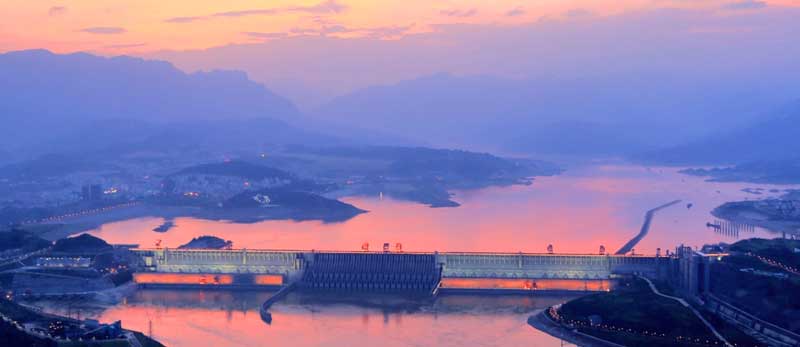
China is by far the world’s largest producer of hydropower. With a total installed capacity surpassing 400GW, the country accounts for roughly a third of global capacity and has led the development of new projects in the modern era.
Hydropower has played a central role in China’s rapid industrialisation and energy security, supporting economic growth, reducing reliance on coal, and helping to lift millions out of poverty. Decades of sustained investment have also positioned China as a global leader in hydropower engineering, setting numerous world records along the way.
The Three Gorges Dam, completed in 2006, remains the world’s largest power station of any kind, with an installed capacity of 22,500MW. While it is a major source of electricity, the project’s primary purpose was flood control. In 2010, the dam helped avert an estimated economic loss of RMB 26.6 billion during a major flood, and a decade later, in 2020, it prevented the displacement of 600,000 people during record flooding – underscoring hydropower’s vital role in climate resilience and adaptation.
China’s Fengning Pumped Storage Power Station, completed in 2024 with a capacity of 3.6GW, is the world’s largest PSH plant. This project exemplifies the immense scale of China’s PSH ambitions and its global leadership in the field, with over 200GW of capacity currently under development.
7. Colombia
The development of hydropower in Colombia has been pivotal to its national growth. In the mid-20th century, international financing, notably from the World Bank, supported the expansion of hydroelectric capacity, with projects like El Guavio contributing significantly to the country's energy infrastructure.
Hydropower now supplies more than two-thirds of Colombia’s electricity generation, making it the backbone of the country’s clean energy system. With abundant river resources and mountainous terrain, Colombia has consistently drawn on hydropower to support its economic development and energy security.
Colombia’s state-owned utility company, Empresas Públicas de Medellín (EPM) – a longstanding IHA member – has been at the forefront of sustainable hydropower development in the country and celebrates its 70th anniversary in 2025.
Colombia continues to advance ambitious hydropower projects. At 2,400MW, EPM’s run-of-river Ituango Hydroelectric Project will become the country’s largest once completed. In 2024, it received Silver certification under the Hydropower Sustainability Standard, a recognition also awarded in 2025 to Energo-Pro's 19.9MW Chorreritas Hydropower Project.
Colombia’s Ministry of Mines and Energy, along with key hydropower developers, remains engaged with the international community to strengthen social and environmental practices and support the country’s ongoing efforts toward sustainable renewable energy development.
8. Costa Rica
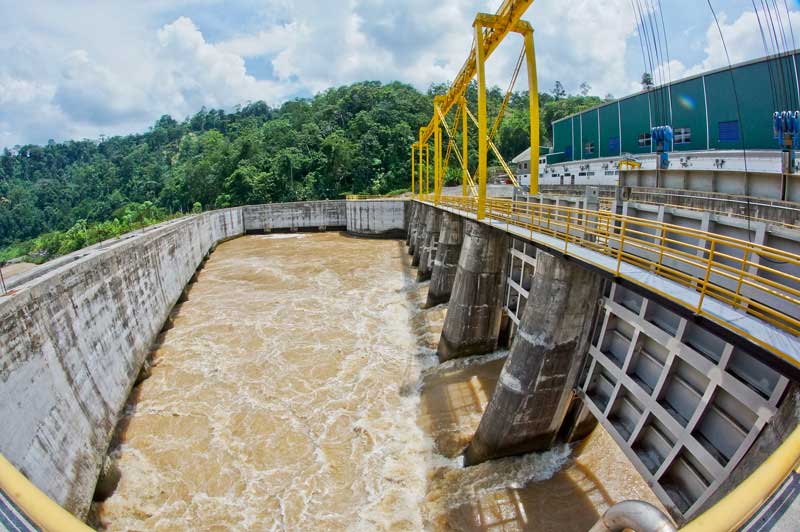
When Costa Rica ran entirely on renewable energy for 250 days in 2016, it was a feat made possible by hydropower, which supplied more than 70% of the country’s electricity. Over the past decade, Costa Rica has continued to operate on close to 100% renewable energy, consistently ranking among the world’s leading nations for clean energy use.
Hydropower also enabled Costa Rica to become one of the first countries to electrify. When its capital city, San José, switched on street lighting powered by hydroelectricity in 1884, it became only the third city in the world to be electrified after New York and Paris. This laid the foundation for the country’s energy development over the following century.
In the modern era, Costa Rica has been a pioneer in sustainable hydropower development. Its nearly 100% renewable energy mix is underpinned by major facilities such as the 305MW Reventazón Hydropower Plant, the largest in Central America. Developed by the Costa Rican Electricity Institute (ICE), Reventazón is widely recognised for its strong environmental and social management, including an innovative river offset approach to minimise ecological impact – an effort that earned it the IHA Blue Planet Prize in 2019.
Costa Rica’s leadership was further underscored as the host of the virtual 2021 World Hydropower Congress. Alongside IHA, the Costa Rican Government championed the San José Declaration on Sustainable Hydropower, a framework for enhancing hydropower's role in the clean energy transition. Backed by a broad coalition of international leaders, the declaration has helped shape the global conversation on sustainable hydropower throughout the 2020s.
9. Ecuador
Hydropower plays a dominant role in Ecuador’s energy mix, supplying well over half of the country’s electricity. It has also been central to Ecuador’s development; hydropower was first installed in the capital Quito in 1894, and in the 1920s it was expanded to underpin the flourishing gold mining industry in the El Oro province.
In recent decades, Ecuador has returned to hydropower to reduce its reliance on imported fossil fuels. Flagship projects like the 1,500MW Coca Codo Sinclair plant – the country’s largest – have helped stabilise energy prices, lower emissions, and even enabled electricity exports to neighbouring countries.
While hydropower has long been a national cornerstone, Ecuador has still only tapped only around 7% of its vast potential. The Ecuadorian government is now laying the groundwork to significantly expand capacity as part of its long-term goal to source 80% of electricity from renewables. New laws and regulations have been introduced to attract private investment, an ambition exemplified by the Zamora G8, G9 and G10 cascading project, with a combined capacity of 7,225MW.
10. Ethiopia
Ethiopia first began harnessing hydropower in the early 20th century, but it was in the 21st century that the country launched a series of transformative projects to expand access to electricity and support economic growth. Among these is the flagship Grand Ethiopian Renaissance Dam (GERD), the largest power plant in Africa. With GERD at the forefront, hydropower provides around 90% of the country’s electricity supply.
GERD represents a national symbol of progress Ethiopia and is transforming the country into a regional energy hub, exporting power to neighbouring countries including Sudan, Djibouti and Kenya, while regional interconnection projects are underway to deepen energy cooperation across East Africa. The project has also been the subject of ongoing diplomatic discussions with downstream neighbours Egypt and Sudan, highlighting the need for cooperative solutions on transboundary water management.
Ethiopia's investment in hydropower has been central to its economic growth, helping to power industries, improve living standards and provide energy access to millions. Looking forwards, the Ethiopian government has also made hydropower central to its ambition of achieving universal electricity access by 2030.
In 2017, Ethiopia became the first African country to host the World Hydropower Congress, held at the United Nations Conference Center in Addis Ababa.
11. Iceland
Iceland may have a small population, but it’s a giant when it comes to clean energy. Hydropower, alongside geothermal energy, has enabled Iceland to run on nearly 100% renewable electricity for decades – a remarkable achievement that has underpinned the country’s low-carbon development model. Today, hydropower accounts for around 70% of Iceland’s electricity supply.
In a landscape shaped by volcanic rock and powerful rivers, Iceland has long harnessed its natural resources for clean energy. Crucially, the country invested in hydropower early in its modern development, using its rivers and glacial meltwater to power homes and heavy industry.
The expansion of hydropower in the 20th century played a pivotal role in Iceland’s industrial transformation. Abundant, low-cost renewable electricity attracted major energy-intensive industries, particularly aluminium smelting, which is now a pillar of the national economy.
This forward-looking approach has underpinned a dramatic rise in living standards, economic growth and energy independence, all built on a nearly 100% renewable electricity system.
Iceland stands as a model for how natural resources can be harnessed sustainably for national progress. This is exemplified by the Fljótsdalur Hydropower Project, the country’s largest, which was awarded Gold certification under the Hydropower Sustainability Standard in 2025 (a first in Europe), recognising international best practice across environmental, social and governance criteria.
12. India

India’s vast geography and growing population have made energy security and sustainability critical national priorities. Hydropower has long been a key part of this story, delivering low-carbon electricity that powers industries and homes, and helps improve energy access in remote communities. With over 50GW of installed capacity, India ranks among the world’s top hydropower producers.
Looking ahead, pumped storage hydropower (PSH) sits at the heart of India’s ambitious energy plans, playing a vital role in stabilising the grid as solar and wind capacity expand rapidly. The government’s commitment to 60GW of PSH by 2032 supported by a ₹4,200 billion investment, reflects this urgency. Projects like Greenko’s 1,680MW Pinnapuram plant in Andhra Pradesh and NHPC’s new agreements across Maharashtra, Odisha, and Gujarat are reinforcing hydropower’s central role in India’s energy future, while creating jobs and improving livelihoods.
States such as Tamil Nadu, Himachal Pradesh, and Madhya Pradesh are repurposing existing reservoirs to integrate PSH into their renewable strategies, while Arunachal Pradesh’s bold 11.5GW hydropower plan aims to unlock the energy potential of its communities and landscapes.
Beyond its borders, India is sharing these lessons through leadership in the Global Alliance for Pumped Storage (GAPS), collaborating with over 50 governments and agencies to drive pumped storage development worldwide.
13. Kyrgyzstan
Nestled among Central Asia’s rugged mountains, Kyrgyzstan’s energy story flows through the Naryn River cascade, forming the backbone of its electricity system. With hydroelectricity supplying around 90% of national power, projects like the 1,200MW Toktogul plant serve homes and industries, while also irrigating the fertile Fergana Valley, supporting regional water security for Kyrgyzstan and its neighbours.
As a partner in the Central Asia Power System (CAPS), Kyrgyzstan plays a key role in regional energy cooperation, helping to balance supply and demand across borders. With rising electricity demand and the impacts of climate change adding pressure to water and energy systems, strengthening hydropower capacity is becoming ever more critical.
The World Bank is providing technical assistance as Kyrgyzstan advances several major new developments, most notably Kambarata-1, a planned 1.86GW plant, with Kazakhstan and Uzbekistan engaged as regional partners in its development.
These developments represent an important step towards unlocking Kyrgyzstan’s vast untapped hydropower potential, of which only about 30% is currently being utilised. With strong political will and international support, Kyrgyzstan is poised to scale up hydropower development and solidify its role as a regional energy leader.
14. Laos
Hydropower is the lifeblood of Laos’ electricity system, supplying the vast majority of the country’s power and supporting both domestic energy needs and export-driven growth.
The country’s hydropower journey began in the 1970s with the commissioning of the Nam Ngum Dam, Laos’ first major hydropower facility. Since then, the sector has expanded rapidly, with projects like the 1,075MW Nam Theun 2 marking milestones not only for their scale, but also for pioneering approaches to community engagement and benefit-sharing.
Building on this foundation, Laos has established itself as a regional hydropower leader, often referred to as the “Battery of Southeast Asia” for its significant role exporting clean electricity to neighbouring countries including Thailand, Vietnam and Cambodia.
The country aims to increase installed hydropower capacity to 13GW by 2030, up from 9GW in 2020, tapping into an estimated total potential of around 26GW. Continued investment from China, Thailand and Vietnam is driving this expansion, helping to balance domestic energy supply growth with cross-border power trade.
15. Malaysia
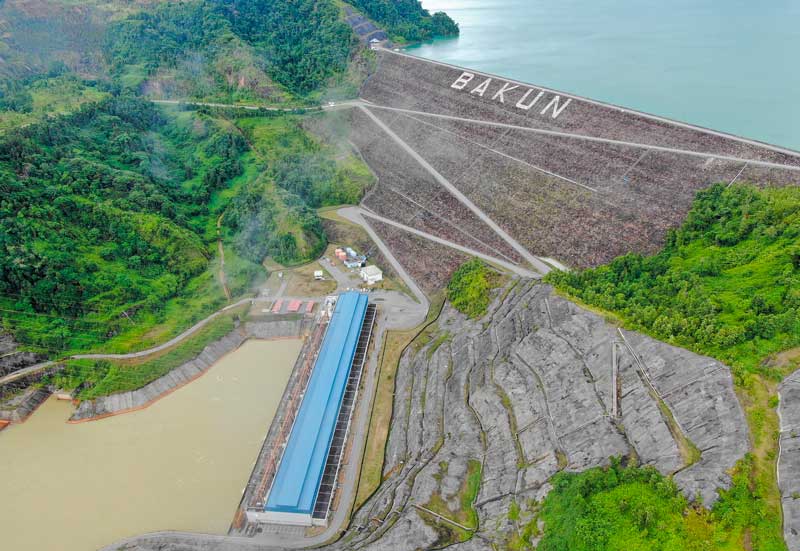
Hydropower has been a cornerstone of Malaysia’s energy landscape for nearly a century, with its roots tracing back to the 40.5MW Chenderoh Power Station in Perak, commissioned in 1930 and still in operation today – a testament to the technology’s longevity.
Today, the state of Sarawak stands at the heart of Malaysia’s hydropower story. Large-scale projects like the 2,400MW Bakun and 944MW Murum plants have transformed the region, powering nearly full electrification and enabling economic growth through the Sarawak Corridor of Renewable Energy (SCORE). These assets supply domestic demand, support energy-intensive industries, and facilitate cross-border electricity trade with Indonesia’s Kalimantan.
State-owned utility Sarawak Energy has embedded sustainability and community well-being into its development approach, with strong social and environmental management programs that prioritise livelihood restoration and local investment. Beyond national borders, Sarawak has played a vital role in advancing global hydropower cooperation, hosting the 2013 World Hydropower Congress and actively contributing to regional sustainability initiatives through its long-standing IHA membership.
16. Mozambique
Hydropower forms the backbone of Mozambique’s electricity system, with the 2,075MW Cahora Bassa plant on the Zambezi River supplying the bulk of national generation. For more than half a century, this landmark facility has underpinned energy exports across southern Africa, supporting both the national economy and regional power stability.
Today, the country is shifting focus to meet growing demand. Mozambique has announced plans to halt long-standing power exports to South Africa by 2030, instead redirecting Cahora Bassa’s output to serve its domestic grid. This transition will require careful coordination to manage impacts on regional energy markets and key industrial users reliant on cross-border electricity like the Mozal aluminium smelter.
At the same time, Mozambique is preparing for a major expansion. In partnership with an EDF-led consortium, the government is advancing the $5 billion Mphanda Nkuwa Hydropower Project, also on the Zambezi. The first phase is expected to deliver 1,500MW of new capacity, with a view to supporting both domestic electrification and broader regional integration.
17. Nepal
Nepal’s electricity system is firmly rooted in hydropower, with the technology generating nearly more than 90% of the country’s domestic power. From its origins in 1911 with the construction of the Pharping Hydropower Station, built to light the palaces of the Rana rulers, the sector has emerged from stagnation in the 20th century to become a national priority for sustainable development and regional cooperation today.
Nepal is experiencing renewed momentum for large-scale hydropower as it looks to scale up its renewable energy capacity. Projects like the proposed 900MW Upper Karnali, backed by India’s Renewable Energy Development Agency, highlight the country's strategic role in advancing cross-border energy integration in South Asia.
To guide this growth responsibly, the government of Nepal is actively working to implement the Hydropower Sustainability Standard, aiming to embed international good practices in development and ensure balanced outcomes for communities and the environment.
In 2023, Bizbell became the first Nepali company to join the International Hydropower Association, signalling increasing domestic engagement with global sustainability efforts.
18. Norway
Hydropower has long been the engine of Norway’s prosperity, powering the country’s transformation into one of the world’s most advanced economies. First developed around the turn of the 20th century, today hydropower provides around 90% of Norway’s electricity generation, forming the backbone of a clean, resilient energy system that underpins both high living standards and a competitive industrial base.
This abundant renewable resource has enabled Norway to deliver some of Europe’s lowest average electricity prices, while also maintaining one of the cleanest energy mixes globally. With more installed hydropower capacity than any other country in Europe, Norway ranks among the world’s top hydro producers – behind only China, Canada, Brazil, the United States and Russia in terms of generation.
Crucially, Norway plays a pivotal role in regional energy balancing through a vast network of interconnectors, exporting surplus power and enhancing grid stability across northern Europe. It is also renewing its commitment to innovation at home, including through investments in pumped storage hydropower, such as the 48MW Illvatn project in Luster.
Beyond its borders, Norway has contributed significantly to advancing sustainable hydropower in emerging economies, notably through the Norwegian Agency for Development Cooperation (Norad), supporting capacity-building and good practices in responsible development.
19. Panama
The Panama Canal is world-renowned as an engineering marvel, but less well known is that its operations have been powered by hydroelectricity since as early as 1913. The Gatun Dam, constructed as part of the canal project, impounds Gatun Lake and continues to generate electricity more than a century on. This early use of hydropower laid the foundation for a sector that today supplies more than 60% of Panama’s electricity.
Building on this legacy, Panama has emerged as a regional leader in clean energy. In November 2024, the country achieved 100% renewable electricity generation for the first time, thanks largely to hydropower. Not only did it meet all domestic demand, but it also exported more than 220MW of surplus electricity to neighbouring countries.
Hydropower continues to play a central role in Panama’s development strategy, reducing dependence on imported fossil fuels and advancing national climate goals. Projects such as the planned 228MW Bocas del Toro, due for completion in 2029, are aligned with Panama’s 2020–2034 national electricity expansion plan and reflect continued momentum in the sector.
From powering a global trade gateway a century ago to enabling a clean energy future, hydropower remains at the heart of Panama’s national progress.
20. Paraguay
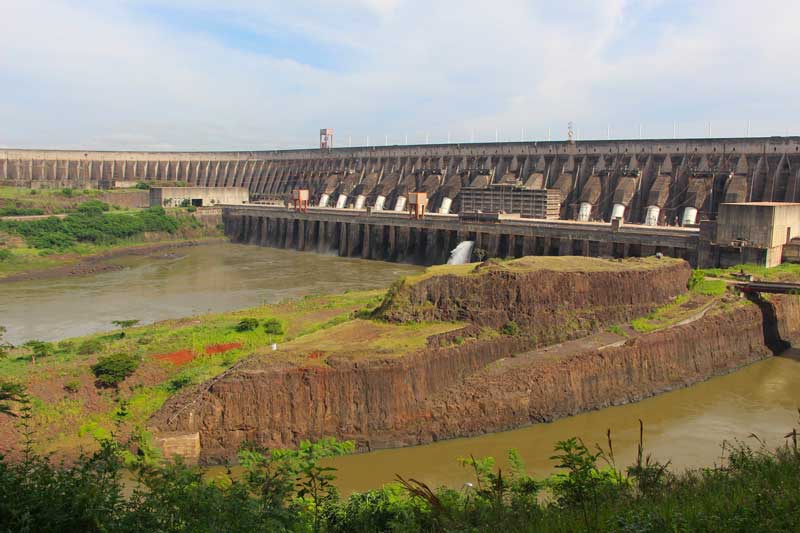
Hydropower is the cornerstone of Paraguay’s energy system, enabling the country to produce nearly all of its electricity from renewable sources. At the centre of this achievement is the Itaipu Dam, one of the largest hydropower plants in the world, jointly developed and operated with Brazil.
Conceived during a time of bilateral tension, Itaipu has become a lasting symbol of international cooperation, powering Paraguay’s development while fostering strong diplomatic and economic ties with its neighbour.
In 2024, Itaipú supplied Paraguay with a record 20.4 TWh of electricity, marking a 4.5% increase from the previous year. The project continues to underpin both domestic energy security and export revenues, reinforcing Paraguay’s position as a renewable energy leader in South America.
Paraguay is now focusing on efforts to optimise and modernise its existing infrastructure. This includes major upgrades to the 200MW Acaray plant, the country’s first major hydropower facility, commissioned in 1969. With support from the Inter-American Development Bank and to be delivered by IHA member AFRY, the modernisation aims to improve efficiency and extend the plant’s lifespan.
21. Peru
Peru was an early pioneer of hydropower in South America, with records of the first hydroelectric plant being built in 1884 to support the mining industry in Huaraz. By 1913, IHA member ANDRITZ had installed turbines at the privately owned Caxias I and II plants, laying the foundation for more than a century of clean electricity generation.
Today, hydropower provides more than half of Peru’s electricity, making it the backbone of the national energy system. The Andean highlands, intersected by fast-flowing rivers, have provided ideal conditions for development. Hikers on the world-famous Inca Trail see this first-hand in their final steps toward Machu Picchu, where a 200MW hydropower plant roars in the valley below, powering much of the Cusco region.
With just 8% of its hydropower potential currently harnessed, there is much room for further growth in Peru. The country’s government continues to prioritise hydropower as part of its sustainable development and climate goals, while recent discussions have focused on opportunities for pumped storage to support system flexibility and decarbonisation.
22. Portugal
Portugal was among Europe’s early adopters of hydropower, with the Vila Real hydroelectric plant commissioned in 1894. Built on the Corgo River by German-Portuguese entrepreneur Emilio Biel, it supplied local electricity needs for over three decades.
Over more than a century since, hydropower has evolved into a central pillar of Portugal’s clean energy system. Today, hydropower typically supplies 25–30% of the country’s electricity and plays a vital role in balancing Portugal’s high levels of variable wind and solar power. The country has emerged as a leader in pumped storage hydropower development, with Iberdrola’s flagship Tâmega Gigabattery among the largest energy storage initiatives in Europe.
Hydropower’s benefits in Portugal go far beyond power provision. Hydroelectric reservoirs like Castelo de Bode support Lisbon’s drinking water supply, while multipurpose dams on the Douro River help manage flooding that once threatened the city of Porto’s historic port wine cellars. By supporting energy production, water management and climate resilience, hydropower continues to power Portugal’s sustainable future.
23. Spain
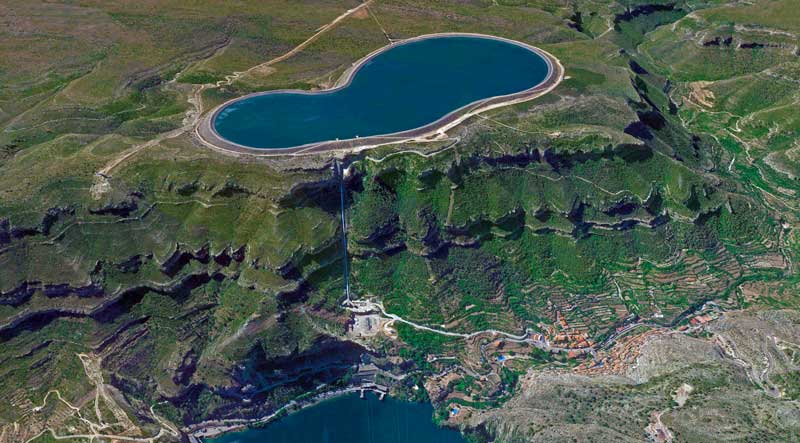
Spain’s hydropower story dates back to the end of the 19th century, when small-scale plants were first built to power local industry. As the country industrialised through the early 20th century, hydropower expanded rapidly to meet rising electricity demand, laying foundations that remain central to Spain’s energy system today.
In a typical year, hydropower supplies around 15% of the country’s electricity. Spain’s pumped storage fleet has long supported system stability, but its critical role was highlighted in 2025 when flexible hydropower plants stepped up during widespread blackouts to kickstart the grid.
With a national target of 22.5GW of energy storage by 2030, 7GW of pumped storage sites already identified, and strong potential to upgrade existing assets, hydropower is poised to play an even more critical role in powering Spain’s clean energy transition and resilience.
24. Switzerland
Switzerland’s hydropower story is one of geography, necessity and innovation. With few fossil fuel resources of its own, the country turned to its rivers and mountains in the early 20th century to power its industrial development. Hydropower became the backbone of one of Europe’s most reliable electricity systems.
Today, around 60% of Switzerland’s electricity comes from hydropower, making it one of the highest shares in Europe. This clean, reliable power not only serves Swiss households and businesses, but also plays a vital role in keeping lights on across the central European grid, with Switzerland acting as a hub for electricity exchange across borders.
While often seen as a mature technology, hydropower is also central to Switzerland’s energy future. It provides the flexibility needed to support growing solar and wind, stores energy through pumped storage and helps manage water resources in a warming climate.
Beyond the country’s borders, the Swiss government – through agencies like Swiss State Secretariat for Economic Affairs SECO – continues to sustainable hydropower development in developing countries, providing funding and forming partnerships to advance responsible projects worldwide.
25. Tajikistan
High in the Pamir Mountains, Tajikistan’s rivers have powered its people and ambitions for nearly a century.
The country’s hydropower journey began in the 1930s, with early projects concentrated in the high mountain region and the construction of the Varzobskaia-1 hydropower station near Dushanbe. Work pressed on even during World War II, as the Khorogskaia plant delivered power to remote mountainous areas as early as 1941.
Today, Tajikistan generates around 95% of its electricity from hydropower. The Nurek Dam – the world’s tallest embankment dam – has long been a national landmark, and now the country is pushing forward with modernisation and new investment. The 3,600MW Rogun Hydropower Project, which has secured nearly US$1 billion in international finance, is set to position the country as a regional electricity powerhouse once completed.
Tajikistan’s has also set a bold vision for 100% renewable electricity by 2032. And with just 4% of its estimated hydropower potential tapped so far, the scope for growth is vast. The country has also been a pioneer in responsible development, with its Sebzor project being the world’s first to be certified under the Hydropower Sustainability Standard.
26. Türkiye
Hydropower has been part of Türkiye’s energy story for well over a century. The Tarsus plant, built in 1902, marked the beginning – a modest facility that hinted at the vast untapped potential flowing through the country’s mountainous terrain.
Fast-forward to today, and hydropower plays a pivotal role in Türkiye’s energy mix, supplying between 20–30% of its electricity. With over 700 plants now in operation, it has become a cornerstone of national energy security, helping reduce dependence on imported fossil fuels.
Ambition has shaped the sector’s evolution. The Southeastern Anatolia Project (GAP), one of the largest development initiatives in the country’s history, has harnessed the power of the Euphrates and Tigris rivers, delivering electricity and irrigation to historically underdeveloped regions.
Now, with nearly 600MW of new capacity under construction, Türkiye continues to invest in hydropower as part of a wider push for clean, secure energy. The pipeline remains strong, the policy support robust, and hydropower’s role in driving national resilience and regional development is as vital as ever.
27. Uganda
Hydropower has lit Uganda’s path to development for nearly 70 years. It began in 1954 with the commissioning of the Owen Falls plant (now Nalubaale) on the White Nile, which powered homes and industry, including the copper mines of Kilembe.
Since then, hydropower has grown to become the dominant source of electricity in the country, supplying around 80% of national demand. From Nalubaale to Bujagali, and now the 600MW Karuma project (completed in 2024), Uganda’s hydropower journey has underpinned economic growth and helped extend electricity access to rural communities. It has also enabled the country to strengthen regional energy cooperation as part of the East African Power Pool.
Looking ahead, Uganda has big ambitions to grow its role as a power hub. With projects like Ayago, Kiba and Oriang on the horizon, together totalling more than 1,500MW of installed capacity, hydropower remains not just the backbone of Uganda’s energy system, but a foundation for sustainable development across the region.
28. United States of America
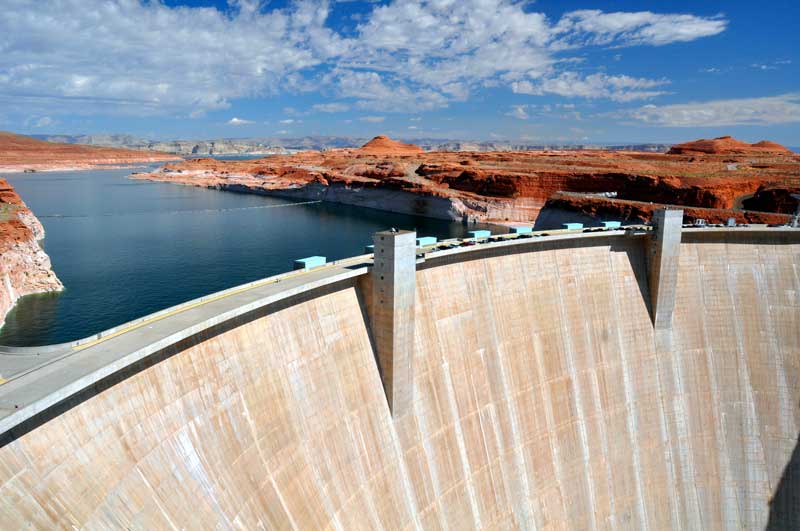
The United States was an early pioneer of hydropower. As early as 1882, the Vulcan Street Plant in Wisconsin became the world’s first hydroelectric power station to supply electricity to private homes and businesses. Over the next century, hydropower helped drive industrial growth and regional development across the country, from the iconic Hoover Dam in the Southwest to the vast generation networks in the Pacific Northwest and Southeast.
Today, the US remains one of the world’s largest producers of hydropower, with over 100,000MW of installed capacity. Hydropower plays a vital role in keeping the grid stable, storing energy, and supporting the expansion of wind and solar. Recent federal investment has reinvigorated the sector, with funding flowing into research, workforce development, and hundreds of maintenance and upgrade projects across the country.
Much of the momentum now centres on pumped storage hydropower, with 67 new projects in development and fast-tracked permitting processes in place. In a country reshaping its energy systems, hydropower remains both a cornerstone of the past and a catalyst for the future.
29. Vietnam
With its steep terrain and dense river systems, Vietnam has long recognised hydropower as a natural cornerstone of its energy mix. From the early days of Thac Ba – its first major hydropower plant built with Soviet support in the 1960s – to today’s vast network of dams and reservoirs, hydropower has played a defining role in powering the country’s development.
Today, hydropower provides around 40% of Vietnam’s electricity, supporting both industry and rural electrification. Major projects like Hoa Binh and Son La have underpinned rapid economic growth and expanded access to energy nationwide.
Vietnam now leads Southeast Asia in hydropower capacity, with over 20GW installed and significant potential remaining. The government’s latest Power Development Plan reaffirms the role of hydropower – and especially pumped storage – in balancing the grid as variable renewables scale up.
Construction is underway on the 1,200MW Bac Ai pumped storage plant – a first for Vietnam and a key step in enhancing grid flexibility. Meanwhile, environmental and social governance is strengthening across the sector, including steps to align with the Hydropower Sustainability Standard. As Vietnam accelerates its energy transition, hydropower remains a strategic pillar.
30. Zambia
Hydropower has been the powerhouse of Zambia’s electricity system for nearly a century, starting with the Victoria Falls plant in 1936. The iconic Kariba Dam and Kafue Gorge stations have long anchored the country’s energy supply, fuelling economic growth and regional cooperation.
Today, hydropower still underpins Zambia’s power mix, accounting for around 90% of electricity provision. The Ngonye Falls Hydropower Project, currently under construction, made history in 2024 as the first hydropower project in Africa to achieve Gold certification under the Hydropower Sustainability Standard, signalling leadership in responsible development.
Zambia is now actively working to strengthen and diversify its energy mix, with plans to expand hydropower capacity in the wetter northern regions while increasing the contribution of solar power. Hydropower continues to be at the heart of the country’s energy security and its ambition to build a resilient, renewable-powered economy.
Read the latest hydropower region and country insights in the 2025 World Hydropower Outlook.
Learn more about IHA’s legacy and read reflections by our members on the #IHA30 story page.




